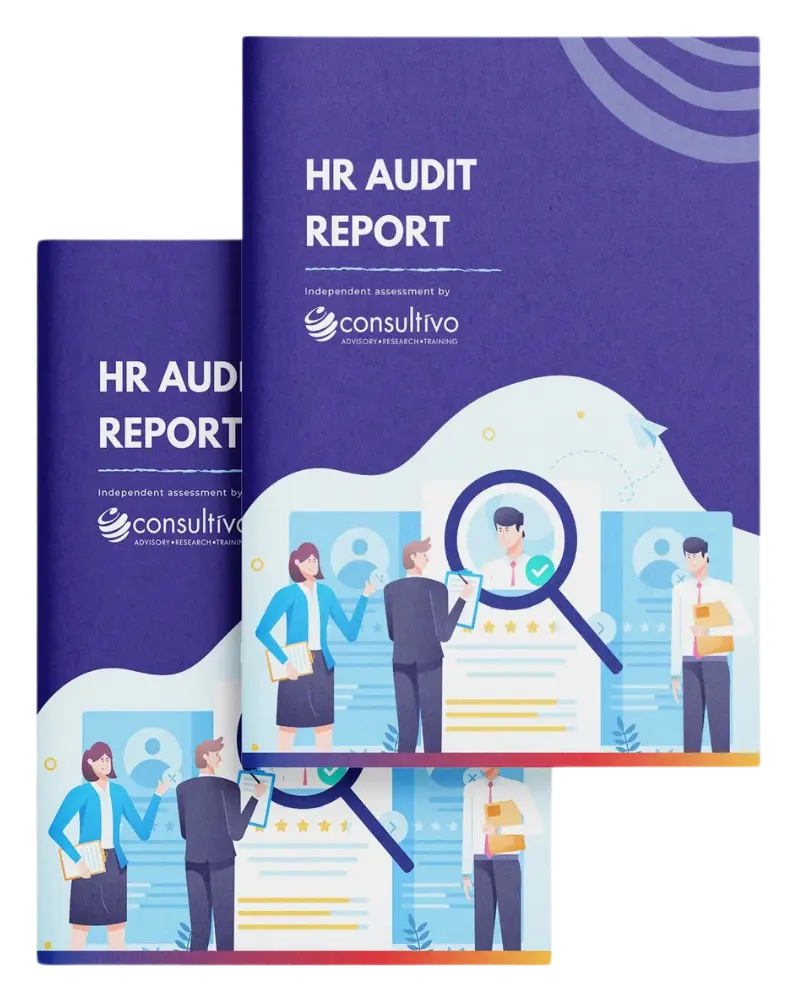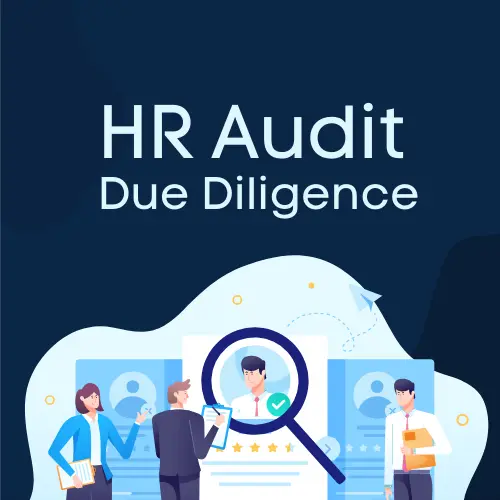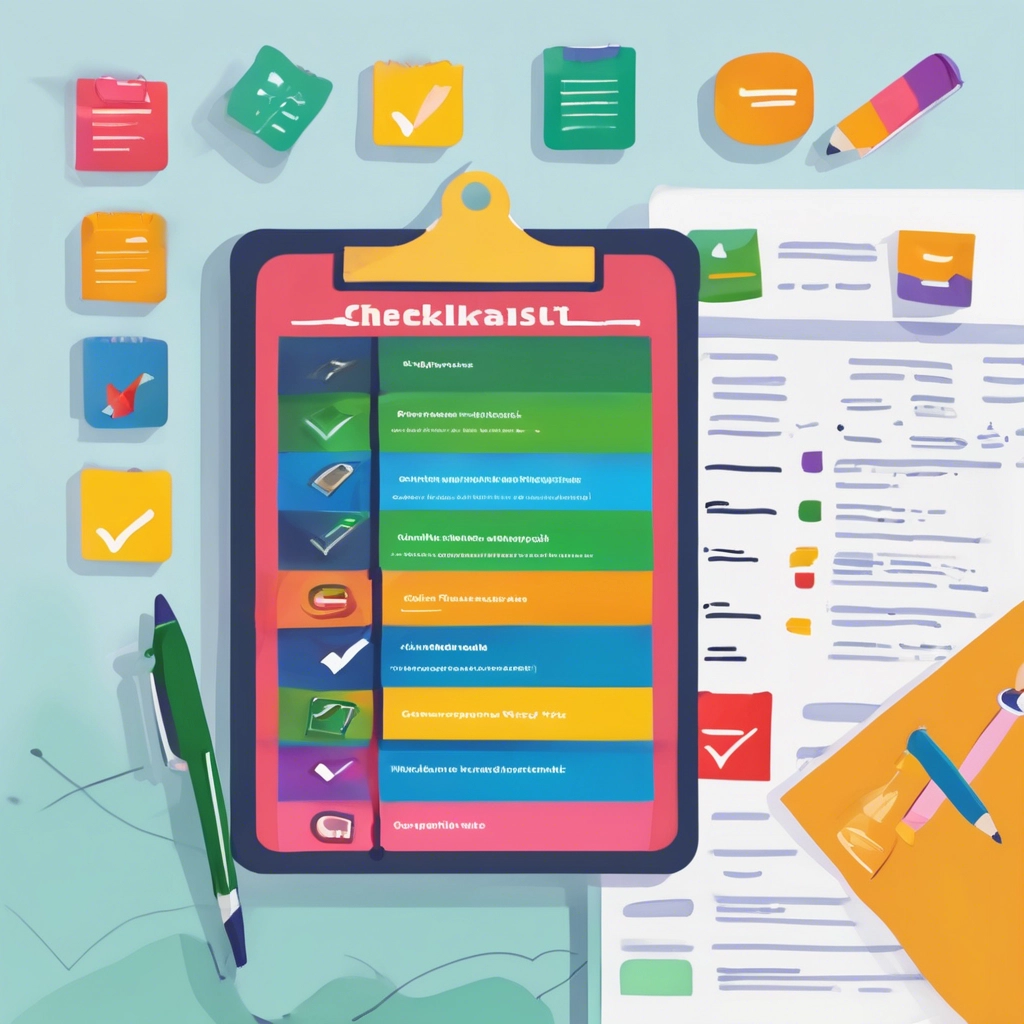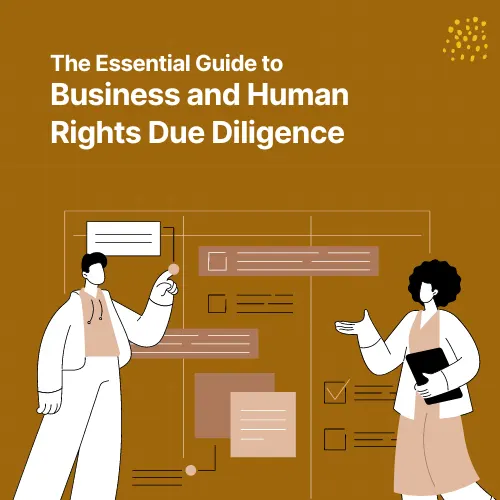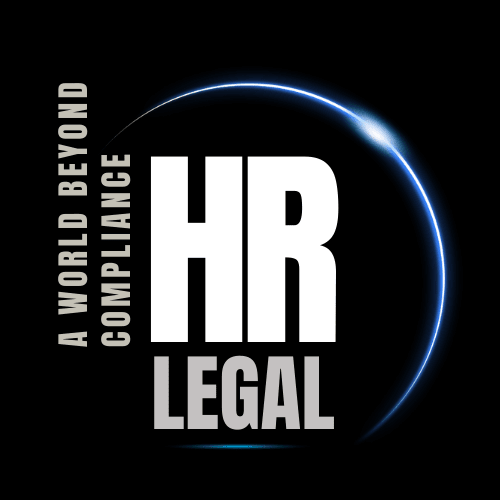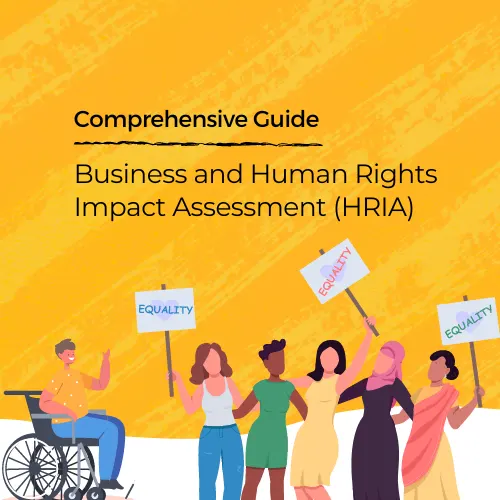Human resource audits, or HR audits, are systematic and objective examinations of an organisation’s HR process and human resource (HR) function. The purpose of an HR audit is to identify areas of strength and weakness in the HR function, and to make recommendations for improvement.
What you will find here
Purpose of HR Audits
HR audits can be conducted for a variety of reasons, including:
- To comply with legal and regulatory requirements
- To identify the risks and opportunities for a merger and acquisition (HR M&A Due Diligence)
- To improve the efficiency and effectiveness of the HR function
- To identify and address potential risks to the organisation
- To support strategic planning and decision-making
Scope of HR Audits
The scope HR audits or Human Resource Audits will vary depending on the specific needs of the organisation. However, any HR audit process will include some or all of the topics listed above.
Types and Approaches of HR Audits
Choosing the right type and approach for your HR audit is crucial for maximising its effectiveness. Here’s a breakdown of some common options.
Types of HR Audits:
Compliance HR Audit
Here the human resources audit process focuses on ensuring adherence to legal and regulatory requirements, e.g., labour laws, discrimination protocols, health and safety regulations.
Operational HR Audits
Assesses the efficiency and effectiveness of HR processes, identifying bottlenecks and improvement opportunities.
Strategic HR Audit
The human resources audit process evaluates how HR aligns with and supports the organisation’s overall business goals and strategic objectives.
Functional HR Audits
The HR audit process evaluates specific HR functions, e.g., recruitment, performance management, compensation, training, to identify best practices and gaps.
Approaches to HR Audits
Comprehensive approach
A comprehensive approach involves a thorough review of all HR policies, procedures, and practices. It is a time-consuming and resource-intensive process but provides a detailed and accurate assessment of the HR function.
Focused approach
A focused approach involves a review of specific HR policies, procedures, and practices. It is a less time-consuming and resource-intensive process but provides a limited assessment of the HR function.
Internal Approach
Conducted by in-house HR professionals, offering cost-effectiveness and deep organisational knowledge. However, objectivity and bias might be concerns
External Approach
Conducted by independent consultants or auditors, providing an objective perspective and expertise. May require more resources, but often delivers fresh insights. Also, establishes transparency leading to enhanced confidence to the stakeholders.
Combination Approach
A blend of internal and external resources, leveraging internal knowledge with external objectivity for a comprehensive analysis.
Additional Considerations
Scope of the Audit
Determines the breadth and depth of the evaluation, ranging from a specific program to the entire HR function.
Methodology or the HR Audit Process
Defines the data collection methods, e.g., interviews, surveys, document review, observation.
Reporting
Clear communication of findings and actionable recommendations tailored to specific issues and priorities.
Choosing the right type and approach depends on several factors like organisation size, budget, specific concerns, and desired outcomes.
Remember, a successful HR audit should be a collaborative effort involving HR professionals, line managers, employees and third party external auditors to ensure its results translate into lasting positive change.
HR Audit vs. HR Accounting: Understanding the Distinctions
While both play crucial roles in the success of an organisation, HR audits and HR accounting are distinct disciplines with different goals and approaches.
HR Audit
Focus
Evaluates the efficiency, effectiveness, and compliance of HR policies, procedures, and practices.
Objectives
Identify areas for improvement in HR processes.
Ensure HR practices align with business goals and legal requirements.
Reduce risk of non-compliance and legal issues.
Foster a positive and productive work environment.
Methodology
Reviews HR documents and policies.
Conducts interviews with HR staff and employees.
Analyses data on HR practices and outcomes.
Provides recommendations for improvement.
HR Accounting
-
Focus
Evaluates the efficiency, effectiveness, and compliance of HR policies, procedures, and practices.
-
Objectives
Quantify the costs associated with human capital (e.g., salaries, benefits, training).
Assess the return on investment (ROI) of HR programs and initiatives.
Inform strategic decision-making about talent acquisition, retention, and development.
Improve the allocation and utilisation of human resources budget
-
Methodology
Tracks and analyses HR-related financial data
Develops accounting models for measuring human capital costs and ROI.
Communicates financial results to HR and management teams.
Key Differences
- Perspective: HR audits take a qualitative approach, focusing on process efficiency and employee well-being. HR accounting takes a quantitative approach, focusing on the financial implications of HR activities.
- Outcomes: HR audits aim to improve HR practices and employee engagement. HR accounting aims to optimise resource allocation and improve ROI on human capital investments.
- Methodology: HR audits rely on interviews, surveys, and observations. HR accounting relies on financial data analysis and modelling.
Interconnection
While distinct, HR audit process and HR accounting are interconnected. HR audits can inform HR accounting by identifying areas where financial resources can be better allocated. Likewise, HR accounting can inform HR audits by highlighting the financial impact of different HR practices.
By working together, HR and accounting professionals can create a comprehensive understanding of the human capital value within an organisation, leading to effective HR strategies and improved financial performance.
In summary, both HR audits and HR accounting are essential tools for managing human resources effectively. Understanding their differences and how they complement each other can help organisations optimise their workforces and achieve their business goals.
HR Audit Process or Methodology
The HR audit process typically involves the following steps:
- Planning: The first step is to develop a plan for the HR audit. This plan should include the scope of the audit, the timeline, and the resources required.
- Data collection: The next step of an HR audit process is to collect data about the HR function. This data can be collected through interviews, surveys, document reviews, and observations.
- Analysis: The data collected in the previous step is then analysed to identify areas of strength and weakness in the HR function.
- Reporting: The results of the HR audit are then reported to the organisation’s leadership. The report should include recommendations for improvement.
- Implementation: The final step is to implement the recommendations made in the HR audit report.
HR audits can be a valuable tool for improving the efficiency and effectiveness of an organisation’s HR function.
By identifying areas of weakness and making recommendations for improvement, HR audits can help organisations to achieve their strategic goals.
Benefits of HR Audits
HR audits can provide a number of benefits for organisations, including:
- Increased compliance with legal and regulatory requirements
- Improved efficiency and effectiveness of the HR function
- Reduced risk to the organisation
- Improved strategic planning and decision-making
- Enhanced employee engagement and productivity
- Improved brand reputation
Human Resource Audit Case Study: Revitalising Growth with an HR Audit
Company: A mid-sized renewable energy company experiencing stagnant growth.
Challenge: Despite innovative technology and a passionate team, the company was experiencing backlashes in its employee engagement and customer acquisition. Employee churn was high, and new talent seemed uninterested.
Solution: An HR audit. The company partnered with a reputable HR audit and consulting firm to analyse HR policies, procedures, and practices.
Key Findings:
- Outdated onboarding process: New hires felt lost and undervalued, leading to early departures.
- Unclear career development paths: Employees lacked direction and incentive to stay.
- Ineffective performance management: Lack of feedback and recognition demoralised employees.
- Disengagement among millennials: Company benefits and work culture didn’t appeal to younger generations.
Recommendations:
- Revamp onboarding with buddy programs and mentorship initiatives.
- Implement clear career development plans with training opportunities.
- Introduce regular performance reviews and performance-based rewards.
- Offer flexible work arrangements and wellness programs to attract millennials.
Results:
- Reduced employee turnover by 25% within the first year.
- Increased employee engagement scores by 15% within six months.
- Improved customer acquisition by 10% due to more satisfied and productive employees.
- Attracted and retained top millennial talent for critical roles.
The HR audit became a catalyst for transformative change. By addressing internal weaknesses and aligning HR practices with company goals and employee needs, they ignited a culture of growth and success.
This human resource audit case study showcases the power of HR audits in unlocking a company’s true potential by prioritising its most valuable asset – its people.
Download your free copy of HR Audit Checklist pdf for self assessment
What are the relevant standards, guidelines, regulations for HR Audits?
Selecting Relevant Standards
The specific standards and regulations relevant to your HR audit will depend on various factors, such as the size and industry of your organisation, its geographic location, and the scope of the audit.
It’s crucial to consult with legal and HR professionals to determine which standards and regulations apply to your case.
Remember, adhering to these standards and regulations is not only about legal compliance but also about creating a fair and ethical work environment for your employees.
A comprehensive HR audit that considers relevant standards can help you achieve both.
Few of the International references
- ISO 30414 Human Capital Reporting
- International Labour Organization (ILO) Core Labour Standards
- UN Global Compact – Principle 1 to 6
- GRI Standards – GRI 401 to 412 and Sector Standards & Guidelines
- UN Universal Declaration of Human Rights
- Supply chain codes like ETI Base Code, SMETA, EcoVadis
- ISO 30415:2021 Human resource management – Diversity and inclusion
- SA 8000 Standard
- BS 76005:2015, Valuing People – Diversity and Inclusion
- Industry Specific Standards & Guidelines and many more
Few of the Indian references
- The Factories Act, Mines Act, BOCW, The Shops and Establishments Act
- The Minimum Wages Act, The Equal Remuneration Act
- The Sexual Harassment of Women at Workplace (Prevention, Prohibition and Redressal) Act
- The Personal Data Protection Bill
HR Due Diligence Audit
HR due diligence is a specialised form of HR audit generally conducted during mergers and acquisitions (M&A due diligences) .
It involves a thorough examination of the target company’s HR practices to assess potential risks and liabilities.
HR Audit and HR Due Diligence Audit – The correlation
HR audit and HR due diligence are both processes that involve the assessment of an organisation’s human resources practices, but they differ in their scope, purpose, and timing. Let’s explore the key distinctions between HR audit and HR due diligence:
1. Scope
HR Audit:
- Focus: HR audits typically cover a broad range of HR functions within an existing organisation.
- Areas Examined: It includes a comprehensive review of HR policies, procedures, and practices, such as recruitment, training, compensation, performance management, and compliance.
HR Due Diligence:
- Focus: HR due diligence is specific to a merger, acquisition, or partnership.
- Areas Examined: It concentrates on evaluating the target company’s HR practices, potential risks, and liabilities. The scope may include workforce structure, employee contracts, benefits, legal compliance, and cultural alignment.
2. Purpose
HR Audit:
- Purpose: The primary purpose of an HR audit is to enhance the efficiency and effectiveness of an organisation’s existing HR functions.
- Outcome: It provides insights for improvement, ensures compliance with regulations, and aligns HR practices with the organisation’s strategic goals.
HR Due Diligence:
- Purpose: HR due diligence aims to assess the risks and liabilities associated with the human resources of a target company during a merger or acquisition.
- Outcome: The goal is to identify potential HR-related issues that might impact the success of the deal, helping the acquiring entity make informed decisions.
3. Timing
HR Audit:
- Timing: An HR audit can be conducted at any time during the life of an organisation, as part of regular strategic reviews or improvement initiatives.
- Frequency: It can be periodic or conducted in response to specific organisational needs.
HR Due Diligence:
- Timing: HR due diligence occurs during the pre-transaction phase of a merger, acquisition, or partnership.
- Necessity: It is a crucial step before finalising a deal, providing critical information to the acquiring entity before integration.
4. Stakeholders Involved
HR Audit:
- Stakeholders: Involves internal HR teams, external consultants, or auditing firms hired by the organisation.
- Focus: Primarily focuses on improving internal HR processes.
HR Due Diligence:
- Stakeholders: Involves stakeholders from both the acquiring and target companies, along with legal and financial experts.
- Focus: Aims to assess risks and legal implications for the acquiring entity.
In summary, while HR audits are a regular part of optimising existing HR functions, HR due diligence is a specialised process specifically designed for assessing HR-related risks and opportunities during a corporate transaction, such as a merger or acquisition.
Purpose of HR Due Diligence Audits
The major purpose of an HR Due Diligence is to make Strategic Decisions based on the people oriented risk profile of the organisation. They provide valuable insights to support informed decision-making during the merger, acquisition, or partnership process. Few of the other purposes are:
- Risk Mitigation: Identify and assess potential risks and liabilities associated with the target company’s human resources.
- Legal Compliance: Ensure adherence to labour laws, regulations, and employment-related obligations.
- Operational Alignment: Evaluate the compatibility and alignment of HR practices with the acquiring entity’s operational and strategic objectives.
- Financial Implications: Understand the financial impact of existing HR practices, including benefit programs, compensation structures, and potential legal claims.
- Cultural Integration: Assess the organisational culture of the target company and its compatibility with the acquiring entity.
- Employee Retention: Evaluate employee retention strategies and potential challenges that may impact post-transaction integration.
- Succession Planning: Examine the presence and effectiveness of succession planning strategies within the target company.
- Data Security: Ensure the security and compliance of HR data, especially concerning sensitive employee information.
- Operational Efficiency: Identify opportunities for improving HR processes and operational efficiency within the target organisation.
HR Audit Companies, Firms, and Agencies
HR audit companies partner in streamlining your people engine.
These experts dive deep into your HR policies, procedures, and practices, evaluating your talent management framework. They identify hidden roadblocks, outdated policies, and compliance risks, all while keeping an eye on your strategic goals.
With their keen eyes and experienced hands, they’ll recommend tailor-made solutions to boost employee engagement, improve efficiency, and ensure legal compliance. Think of them as HR whisperers, guiding you towards a happier, more productive workforce – the bedrock of a thriving organisation.
So, if you’re looking to unlock the full potential of your human capital, consider partnering with an HR audit company – it could be the wisest investment you’ll make in your future.
There are a number of HR audit companies, firms, and agencies that can help organisations conduct HR audits. These organisations can provide a variety of services, including:
- Planning and conducting third party independent HR audits
- Providing expert advice on HR practices and procedures
- Developing HR policies and procedures
- Implementing HR systems and technology
- Providing training and development for HR professionals
Conclusion
Wrapping up your HR audit journey, you’re holding a blueprint for a thriving, happy company.
So, now we know HR audit is a strategic tool that optimises HR functions, ensures compliance, improves efficiency and aligns with business objectives.
But just like a fancy architect’s drawing, it needs actual builders to bring it to life. This final chapter is your toolkit for transforming those audit insights into action.
Here’s the game plan
Prioritise
Not everything needs fixing at once. Pick the most critical issues that’ll give you the biggest bang for your buck, both in terms of employee happiness and legal peace of mind.
Rally the troops
Don’t go it alone! Get your team on board, share the audit findings, and work together on solutions. Remember, happy employees make the best change warriors.
Action stations:
Break down your goals into clear, actionable steps. Think SMART – Specific, Measurable, Achievable, Relevant, and Time-bound. It’s all about making sure everyone knows what they need to do and when.
Track your progress
Don’t just set sail, plot your course! Regularly monitor your progress, celebrating wins and tweaking your tactics if needed. Remember, HR audits are living documents, not dusty old tomes.
Keep the momentum going:
Once you’ve made some changes, don’t let the fire die down. Schedule regular reviews and mini-audits to keep your HR engine purring like a kitten.

Let's discuss
Bonus tip: Share your success story! Let everyone know how the HR audit has made your company a better place. Celebrating achievements motivates the team and attracts top talent.
Remember, a successful HR audit is about more than just ticking boxes. It’s about creating a thriving environment where your people can flourish and your business can soar.
So grab your HR Audit toolkit, embrace the change, and watch your HR magic unfold!
Cheers to happy employees, a compliant company, and a prosperous future!
Take the next step in your DEI journey. Learn about our DEI Consulting Practices and DEI Training Courses. Read our latest insights on DEI trainings for employees and Creating a Culture of DEI.
Share this post
Category: Blog
Tags: People Advisory
About the author
Director – Sustainable solutions at Consultivo
Madhabi Guha specialises in the domains of ESG, Social Compliance, Business and Human Rights, Development Projects and focuses on supporting go-to-market teams along with customer and partner relationships. Madhabi has been working in the sustainability & business excellence advisory business for over 14 years.
Madhabi has been developing individuals, teams, and organisations in the areas of leadership, excellence and Human Factors in the field of sustainability, people and community.
Related insights
View more in Impact Stories | Blogs | Knowledge Bank | News and Events

